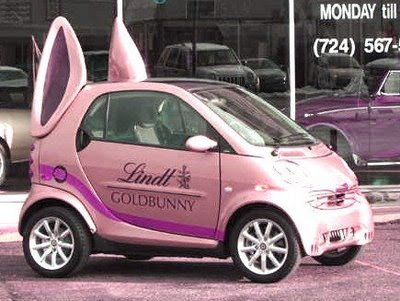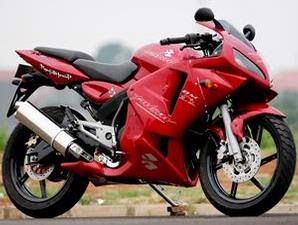
The most fantastic way of
car modification and to change the appearance of your car and to turn them into one of those
pimped out cars is to
re-spray it. One way to avoid the problem of
scratches scrapes or paint degradation is to
apply bare metal spray.Spray cans are only appropriate when you are
repainting at small scale.
Repaint at big level will require a professional finish and therefore acceptable arsenal of
car repaint equipment which
includes filtered booth to avoid emission carcinogens and other environment damaging gases into the atmosphere and a high quality spray gun with
different sizes of nozzle depending on the paint and finish required.
Before starting the
car repaint jobs please make sure that the area is completely
dust free. Performing car repaint is encouraged in
a warm environment as it really makes your job easier and really enhances the finish of your paint. If you happen to be in a cold territory then make sure you have an access to a
low bake oven.
Make sure you apply the right paint for the right job as varieties of different paints are available in the market all made for different purposes. For instance if you want to apply a
flip paint or even want to give a
special effect to your car by
repainting it then both will require different types of paints. There are variety of effects to choose from which includes
metallic, pearlescent, translucent and many more. Obviously the technique to apply these will differ accordingly. However I will presume a
regular base paint in this article in order to just make myself clear.
Before you start to repaint your car make sure that you have complied with all the
safety measures.
The most important safety step before repainting your car is to
cover your mouth with good filtration. The
paint fumes are believed to be
medically injurious to inhale so a normal
decorator mask is not going to provide appropriate safety. Furthermore ensure that the area in which you are performing the
repaint is well ventilated and there’s a good passage of fresh air.
As explained
above spray paint cans are good only for small scale repaint. For
large scale repaint you need to
acquire a spray gun and good quality car paint. Moreover
spray paint cans are more expensive on aggregate basis so if you are looking for a
cool and stunning car modification through
repaint you have to stop relying on
spray paint cans. As large scale repaint means that you will be doing
5-6 thin mist coats so it would require at least
18-20 spray paint cans. So you can estimate the overall cost when you are trying to be a miser and avoid spending on
spray paint gun and good quality car paint.Now coming to the procedure. For your convenience I have tried to divide the whole procedure into sequential steps so you would feel easier to remember and act as explained in this article.
Step 1: Wash thoroughly, the area where the paint has to be applied. Make sure that the
sanding and filling has been done before you reach this stage. Even the slightest uneven body surface will stand out so keep on watching the car’s body from different angles and ensure that not even a slightest bump remains there. An effective technique to figure out any bump on the car is to
wet the surface and use a lamp to inspect for any flaw. All the bumps can be seen if any.
Just in case you did not replace the old paint using
paint remover and protected the
metal with rust inhibitor, make sure that all the
dust, grit and road film are removed via a
good quality car cleaning fluid free of wax additives.
Step 2:Do some clinical cleansing. Use a
paper towel or a screen wipe which is more preferred and any
solvent cleaner such as
IPA or similar spirit used for cleansing purposes wipe over the surface to a smear free finish.
Step 3:Masking. Be conscious of all the
exposed areas which are going to get painted. If you are not able to apply
masking even a few
mm then you will have to endure some really annoying
over-spray lines. The
masking proves itself even more significant when you are to
change the color of the car. Check for all the
seams by opening the car’s doors, bonnets e.t.c. and of course don’t forget to
remove the glass. The more plastic you will remove from the car the easier you are making your job.
Step 4: Spraying. Make sure that the
spray paint gun you are using
ejects a good flow of paint and for this purpose first,
test the pressure and flow by applying the paint on the small piece of a card and ensure that
blobs and splatters are minimized. A really valuable tip seems to be appropriate here. When
spraying paint do not aim to completely cover the metal but just smear the
spray gun over the area with an even speed. Do not try to complete the job in just few
thick coats. Remember that
numbers of thin coats are better than few thick coats. Keep on
moving the spray gun over the area with a
regular pace. If you moved from
right to left at
first coat then move
up to down in the second one as this will provide
more detail. If only a portion of a car is to be painted i.e. a panel, then try to
blend the paint with the surrounding panels as the paint is going to fade-off eventually. It is preferred to give a break of one hour between the coats. In majority cases the final touch has to be given through a
lacquer coat.
The final lacquer coat can be applied in
series of thin coats.Step 5:After applying the lacquer, let it to go off for
2-3 days before waxing. Bring an end to the repaint job by applying
fine grit of wet and dry paper then polish off with a cutting paste and then apply a
good quality wax.
Wax is necessary as it assists and protects the car when
refitting the parts and accessories you previously plucked from it.
However, ignore step 5 if you want a matt (non-reflective finish).











































